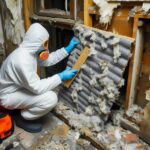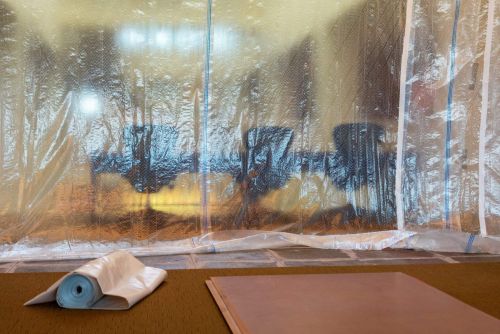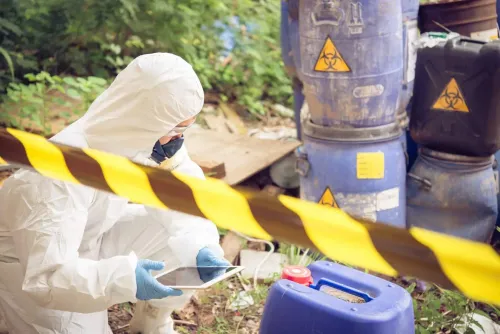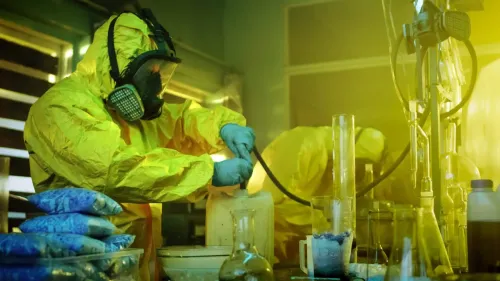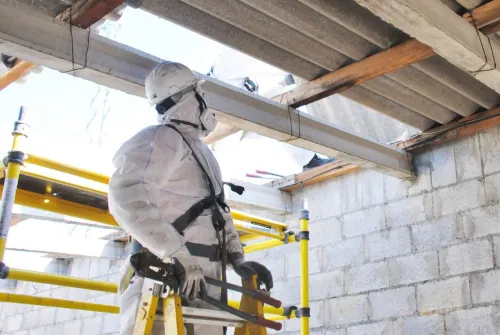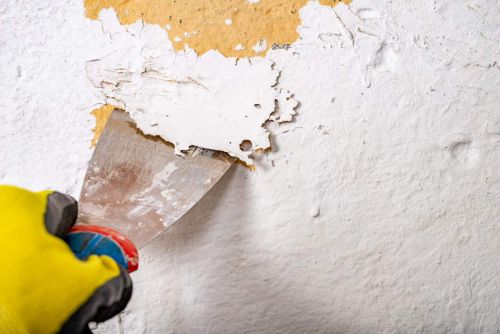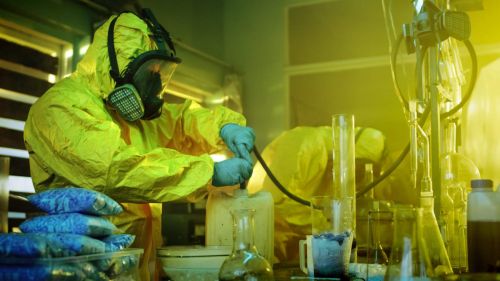What Is Asbestos Abatement

Asbestos, once a popular building material due to its durability and fire-resistant properties, has now become a significant concern in older buildings. Asbestos abatement manages the risks posed by asbestos-containing materials (ACM) in these structures. This comprehensive guide delves into what asbestos abatement entails, the health risks associated with asbestos, and the various procedures and safety measures involved in effectively handling asbestos. It also highlights who needs to consider asbestos abatement and why it is essential in maintaining safe living and working environments.
What Is Asbestos Abatement
Asbestos abatement is critical, particularly in older buildings that contain asbestos. This process involves removing, encapsulating, or repairing materials containing asbestos to prevent asbestos fibers from being released into the air and posing a health risk.
Understanding Asbestos
Asbestos is a group of naturally occurring fibrous minerals known for their durability, fire resistance, and insulating properties. When these materials are disturbed or damaged, asbestos fibers can become airborne and pose a serious health hazard when inhaled.
Before its health risks were fully understood, asbestos was widely used in more than 3200 building materials such as insulation, roofing shingles, floor tiles, drywall, joint compound, texture, etc. While the use of asbestos in products has decreased dramatically, it hasn’t gone away completely.
Asbestos Health Risks
While asbestos in your home or place of business is not inherently dangerous, disturbing materials made with asbestos can disperse asbestos fibers, which are harmful to inhale. If you suspect asbestos fibers are in the air, it’s best to stay away.
Inhalation of asbestos fibers can lead to serious diseases, such as:
- Asbestosis: A chronic lung disease causing scarring of lung tissue, leading to breathing difficulties.
- Lung Cancer: A significant risk for people exposed to asbestos, especially when combined with smoking.
- Mesothelioma: A rare and aggressive cancer predominantly caused by asbestos exposure, affecting the lining of the lungs, abdomen, or heart.
Asbestos Abatement Procedures
A thorough inspection by a certified industrial hygienist is necessary to identify asbestos-containing materials before any abatement work.
Inspection and Testing
Asbestos abatement begins with a crucial step of inspection and testing conducted by a certified industrial hygienist. This process involves a detailed visual inspection of the property, followed by sampling and laboratory analysis of suspected materials to confirm the presence of asbestos. The outcome of this inspection is a comprehensive report that assesses the risk and suggests appropriate abatement measures.
Removal
When asbestos removal is deemed necessary, typically in renovations or demolitions, it’s carried out with strict safety protocols. Asbestos abatement professionals isolate the area and use wet methods to minimize fiber release while removing asbestos-containing materials. Workers wear personal protective equipment, and the air quality is rigorously monitored to ensure safety. Post-removal, the area undergoes a thorough inspection and air testing to confirm the elimination of asbestos risks.
Encapsulation
Encapsulation is less invasive than removal and is chosen when asbestos is in good condition, and the risk of fiber release is minimal. However, encapsulated materials require regular inspections to ensure ongoing safety. Encapsulation involves applying sealants to asbestos materials. The sealant either penetrates or coats the surface to prevent fiber release. Asbestos removal can be quite an expensive process. Encapsulation is one method that can be employed to mitigate the risk of asbestos exposure.
Enclosure
Another method of asbestos abatement involves creating a physical barrier around the asbestos containing material. This method doesn’t remove the asbestos but contains it, serving as a temporary solution or when removal isn’t feasible. Like encapsulation, enclosed areas need consistent monitoring to manage the risk effectively.
Removal, Encapsulation and/or Enclosure methods of asbestos removal should only be performed by an Asbestos Certified General Abatement Contractor.
Safety Measures and Regulations
Whether removing asbestos or containing it, workers in asbestos abatement must wear PPE, including respirators, disposable overalls, gloves, and shoe covers, to minimize asbestos exposure. Strict procedures for safely removing and disposing of PPE are followed to prevent contamination.
Containment in asbestos abatement involves sealing the work area with heavy-duty plastic sheeting and using negative air pressure units with HEPA filters. This setup prevents asbestos fibers from spreading outside the work area, ensuring a safe environment for workers and building occupants. To ensure workers don’t contaminate the area outside the containment, decontamination facilities near the work area are necessary, allowing workers and their equipment to be cleaned before exiting the containment area. These decontamination facilities consist of chambers for removing contaminated gear, showering, and changing into clean clothes.
Asbestos waste is kept wet during removal, sealed in labeled, leak-tight containers, and transported to designated disposal sites. This process ensures the safe disposal of asbestos materials, protecting public health and the environment.
Who Needs Asbestos Abatement?
Buildings constructed before the 1980s are particularly at risk for containing asbestos, as it was a common building material for insulation, flooring, and other applications. Owners of these buildings need to consider asbestos abatement to ensure the safety of occupants and compliance with health regulations.
In some countries, federal laws require public schools to regularly inspect for damaged asbestos and manage it appropriately. This includes conducting abatement procedures to eliminate or reduce the risk of exposure to students and staff.
Before any renovation or demolition project, buildings need to be assessed for asbestos. If present, asbestos abatement must be conducted before the start of the project to ensure that the disturbance of building materials does not release asbestos fibers into the environment.
Homeowners, especially those living in older homes, need to be aware of the potential presence of asbestos. If considering renovations or repairs that may disturb existing structures, it’s important to have the home inspected for asbestos. If found, professional abatement may be necessary before proceeding with the project to ensure the safety of the inhabitants.
Asbestos Abatement Near You in Colorado
Asbestos abatement is about ensuring public health and safety, particularly in buildings constructed before but not limited to pre-1980 construction.
Asbestos abatement is a vital process for maintaining safety in environments with asbestos presence. It encompasses inspection and testing, as well as various methods like removal, encapsulation, and enclosure. Safety is also a concern, with stringent safety measures such as PPE use, containment, and proper waste disposal. Asbestos abatement is necessary for owners and property managers of buildings constructed before but not limited to pre-1980 construction.
Asbestos Professionals LLC is the asbestos abatement expert in Colorado, providing abatement services throughout the entire state. Whether you need asbestos abatement, mold removal, or meth cleanup, we’re here to help. Contact us today to get started on cleaning up your space.


